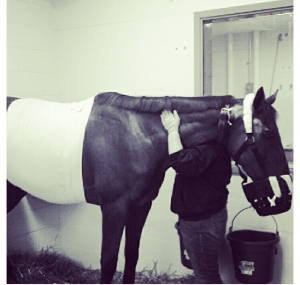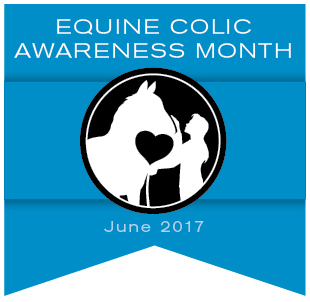 I bought my off the track thoroughbred Salty on May 9, 2012. He was the quietist, most willing horse I have ever worked with. He was my new project horse to rehabilitate and train and we soon become best friends.
I bought my off the track thoroughbred Salty on May 9, 2012. He was the quietist, most willing horse I have ever worked with. He was my new project horse to rehabilitate and train and we soon become best friends.
He showed at 4H/open shows, NJHA and went to our 4H fair throughout the summer. He was a dream to be around. Salty also became a crowd favorite because of his reputation as an OTTB. He has a babysitter personality, which allowed me to have little kids and adults learn to ride on him.
The Call no Horse Owner Wants to Receive
On September 29, I got a call that no horse owner ever wants to get. Something was seriously wrong with my horse. When I got to the barn, I found my horse laying in his stall, breath as cold as ice. He was originally found in a different field then he was in the night before and it looked like he had been thrashing around in the mud for most of the night. He also had huge cuts from sliding under the fence in the other pasture that covered his face, hips and legs. Salty was found by the barn owner who slowly walked him into the barn before calling me.
After talking to my vet, we were sent to New Bolton Equestrian Hospital for evaluation. I was told my horse was severely colicking and I had two choices: Put him down or attempt emergency surgery. I made the hear wrenching decision to try surgery as long as my horse didn’t have to suffer anymore.
A Case of “Bad Luck”
Salty was in surgery for three of the longest hours of my life. The surgeon said he nearly died on the table, but kept pushing through. Salty’s small intestine was twisted into a knot, but the vet was unsure how it happened.
Around an hour later, Salty woke up and I was able to see him. The vet described the colic as a case of “bad luck.” I couldn’t help but think that this “bad luck” could have been prevented if I had taken the right steps to protect my horse. After a week in the hospital, Salty was allowed to go home.
Colic Recovery is a Long Road
The home care after surgery was extremely difficult because his surgery was so intense. My horse unfortunately did not have a smooth recovery. Even after following every rule and having checkups with my vet every two weeks, we had to fight off an infection and a hernia. After colic surgery, about 6% of geldings are likely to develop hernias. My Salty experienced another case of “bad luck” and got one.
As of today, Salty is still not on full turnout, his incision has healed, his infection has gone away and the hernia is nearly gone too. I regret not putting my horse on anything to help reduce the risk of colic. Since then, I have done a lot of research about colic and I monitor what my horse is fed all the time, I make sure I know about the medication/supplements he is getting, and I try to control his cribbing habit.
If he was protected before, maybe Salty would be racing around barrels again, or teaching another little kid how to ride. But for now, we are just focusing on getting better and I’m so grateful to say I still have my Salty to greet me at the barn everyday.
I encourage every horse owner to help protect their horse against colic and to stay educated to help save you and your horse from an awful colic experience.
The Crusade Against Equine Colic thanks Dawn for sharing her personal colic story. Dawn is a candidate for the Equine Colic Awareness Month Spokes-Horse Contest. Enter your Colic Story for a chance to win.







A hernia occurs when an organ or fatty tissue squeezes through a weak spot in a surrounding muscle or connective tissue called fascia. The most common types of hernia are inguinal (inner groin), incisional (resulting from an incision), femoral (outer groin), umbilical (belly button), and hiatal (upper stomach).”^^:
All the best http://www.healthmedicinebook.comuw
Android Game Development takes more than knowledge cfdeedkkddgaedga